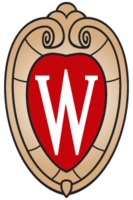Engineers at UW-Madison have created a new method for improving the quality of 3D-printed metal products.
Additive manufacturing, commonly known as 3D printing, can create complex metal structures with greater ease than traditional manufacturing processes, a release from the university shows. But the process often introduces defects such as tiny cracks and pits in the material.
Lianyi Chen, an assistant professor of mechanical engineering at the university, says metal 3D printing has thus far been unable to “consistently produce parts with the same high quality and reliability” as conventional manufacturing processes. That can pose a problem for using these parts in “critical or load-bearing applications where failure isn’t an option,” he said in the release.
To overcome this issue, Chen and a team of student researchers incorporated tiny ceramic particles into a technique called laser powder bed fusion used in the manufacturing process. The technique involves using a laser to melt metallic powder placed in specific places to help form the final product. Defects can arise when tiny droplets of liquified material “splash out” and interact in unforeseen ways.
Introducing ceramic particles into this process helps to keep that from occurring, Chen and his team determined through x-ray imaging and theoretical modeling. He said they 3D printed a metal part with few defects and comparable quality to a commercial product.
Minglei Qu, a graduate student and lead author on the study, says this method was able to “get rid of the problematic large spatter” typical to the process for the first time.
“When we introduced the nanoparticles, we found that they made the liquid droplets almost have an armor on the surface, so that when they collided, they didn’t merge together,” Qu said in the release.
Their work was recently published in the journal Nature Communications, and was funded in part by the National Science Foundation.
See the full study here: https://www.nature.com/articles/s41467-022-28649-2






